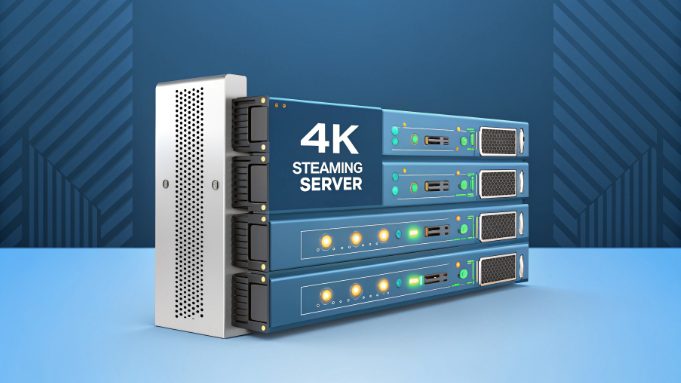4K Streaming Server Requirements in Hong Kong

The evolution of 4K streaming technology has fundamentally transformed the digital media landscape, creating unprecedented demands on server infrastructure, particularly in Hong Kong’s dynamic digital ecosystem. As a strategic hub for content delivery across Asia-Pacific, Hong Kong’s server hosting facilities must meet increasingly rigorous technical specifications to handle 4K streaming effectively. This comprehensive guide examines the essential server requirements, optimization strategies, and architectural considerations for building robust 4K streaming operations.
Understanding 4K Streaming Fundamentals
4K streaming represents the pinnacle of current video delivery technology, transmitting ultra-high-definition content at 3840×2160 pixels. This demanding format requires substantial computational resources and network capacity to maintain smooth playback and high-quality user experience. The technical complexity of 4K streaming extends beyond mere resolution considerations:
- Bit rate requirements ranging from 15-25 Mbps per stream, with higher requirements for HDR content
- Variable frame rates supporting 24-60 fps for different content types
- Advanced color depth processing at 10-bit for enhanced visual fidelity
- Modern codec implementation using H.265/HEVC or VP9 for efficient compression
CPU Configuration Requirements
The processor architecture forms the cornerstone of any 4K streaming server, requiring careful consideration of multiple performance factors. Modern streaming workloads demand sophisticated processing capabilities to handle real-time transcoding, adaptive bitrate streaming, and concurrent user sessions:
- Enterprise-grade processors with minimum 16 physical cores to support parallel processing
- High-frequency operations at 3.0GHz or above to manage real-time encoding
- Latest generation Intel Xeon or AMD EPYC processors with advanced instruction sets
- Hardware-accelerated encoding support through AVX-512 instructions
The optimal configuration typically involves dual-processor setups, leveraging either Intel Xeon Gold series or equivalent AMD solutions to provide the necessary computational headroom for peak performance periods.
Memory (RAM) Specifications
Memory requirements for 4K streaming servers scale exponentially with concurrent user count and stream quality. The RAM configuration must balance capacity, speed, and reliability to maintain consistent performance:
- Enterprise-grade ECC RAM starting at 64GB for basic configurations
- Expanded memory configurations of 128GB-256GB for production environments
- High-frequency memory modules running at minimum 3200MHz
- Multi-channel memory architecture with quad-channel configurations preferred
Storage Infrastructure
Storage systems for 4K streaming demand a careful balance between performance, reliability, and capacity. Modern deployments require sophisticated storage architectures to handle the intensive I/O operations associated with high-definition content delivery:
- Enterprise-grade NVMe SSDs configured in RAID 10 for optimal performance and redundancy
- Substantial storage capacity allocation based on content library size and growth projections
- High IOPS capability exceeding 100K sustained operations for smooth content delivery
- Enterprise-class SSDs with enhanced write endurance and power loss protection
Network Bandwidth Requirements
Hong Kong’s position as a digital hub necessitates robust network infrastructure to serve both regional and international audiences effectively:
- High-capacity uplink connections starting at 10Gbps for content distribution
- Expanded downlink capacity at 40Gbps to handle content ingestion and updates
- Advanced BGP routing with multiple transit providers for redundancy
- Integrated CDN capabilities with edge caching support for improved delivery
System Optimization Strategies
Achieving optimal performance requires comprehensive system optimization across multiple layers:
- Enterprise Linux distributions optimized for streaming workloads
- Advanced kernel tuning for improved I/O handling and network performance
- Modern TCP congestion control implementations for enhanced throughput
- Comprehensive monitoring solutions with predictive analytics capabilities
Cost Analysis and Planning
Investment considerations for Hong Kong hosting solutions should account for multiple factors affecting total cost of ownership:
- Hardware infrastructure costs including redundant components
- Premium bandwidth pricing reflective of Hong Kong’s tier-1 connectivity
- Professional colocation services in enterprise-grade facilities
- Comprehensive managed services with round-the-clock support
Implementation Best Practices
Successful deployment requires adherence to established best practices and industry standards:
- Systematic performance benchmarking and optimization
- Robust failover systems with automated recovery procedures
- Advanced content delivery optimization techniques
- Comprehensive security protocols and compliance measures
Scalability Considerations
Future-proofing streaming infrastructure requires careful attention to scalability factors:
- Flexible architecture supporting horizontal scaling capabilities
- Advanced load balancing systems for traffic management
- Modular storage solutions enabling seamless expansion
- Scalable network architecture supporting bandwidth growth
The technical requirements for 4K streaming servers in Hong Kong represent a sophisticated intersection of hardware specifications, network architecture, and system optimization strategies. Success in this demanding environment requires careful attention to server hosting configurations, ensuring robust performance while maintaining operational efficiency. Organizations looking to establish or upgrade their streaming infrastructure must consider these guidelines as part of a comprehensive implementation framework.

